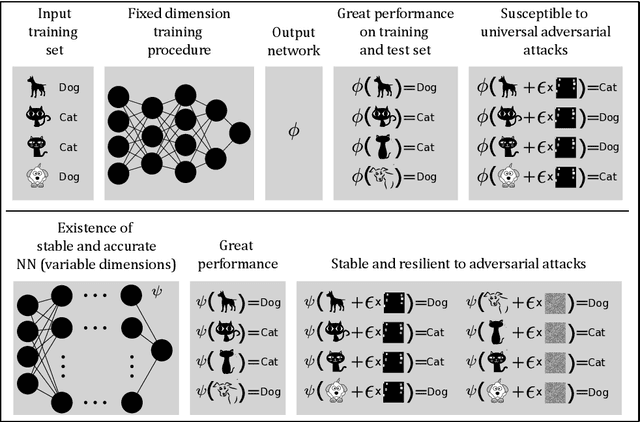Anders C Hansen
The mathematics of adversarial attacks in AI -- Why deep learning is unstable despite the existence of stable neural networks
Sep 13, 2021
Abstract:The unprecedented success of deep learning (DL) makes it unchallenged when it comes to classification problems. However, it is well established that the current DL methodology produces universally unstable neural networks (NNs). The instability problem has caused an enormous research effort -- with a vast literature on so-called adversarial attacks -- yet there has been no solution to the problem. Our paper addresses why there has been no solution to the problem, as we prove the following mathematical paradox: any training procedure based on training neural networks for classification problems with a fixed architecture will yield neural networks that are either inaccurate or unstable (if accurate) -- despite the provable existence of both accurate and stable neural networks for the same classification problems. The key is that the stable and accurate neural networks must have variable dimensions depending on the input, in particular, variable dimensions is a necessary condition for stability. Our result points towards the paradox that accurate and stable neural networks exist, however, modern algorithms do not compute them. This yields the question: if the existence of neural networks with desirable properties can be proven, can one also find algorithms that compute them? There are cases in mathematics where provable existence implies computability, but will this be the case for neural networks? The contrary is true, as we demonstrate how neural networks can provably exist as approximate minimisers to standard optimisation problems with standard cost functions, however, no randomised algorithm can compute them with probability better than 1/2.
 Add to Chrome
Add to Chrome Add to Firefox
Add to Firefox Add to Edge
Add to Edge